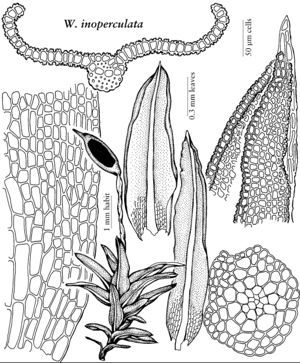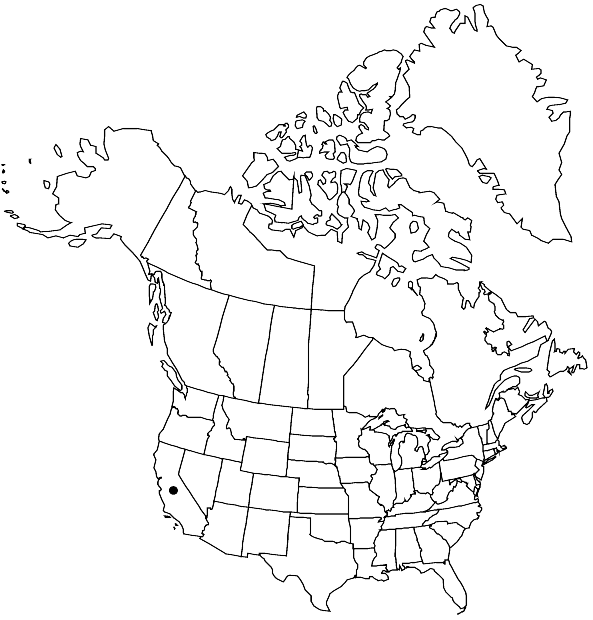Weissia inoperculata
Bryologist 67: 164. 1973,.
Leaves elliptic, base weakly or not differentiated in shape, shoulders absent, distal laminal margins plane to erect, rarely incurved, apex plane, acute to rounded-acute, mucro usually strong, of (3–) 4–6 (–7) cells; costal adaxial stereid band smaller than the abaxial; distal laminal cells 8–10 (–13) µm wide. Sexual condition dioicous (perigoniate plants mixed with the archegoniate). Seta elongate, 0.2–0.3 cm. Capsule cleistocarpic, short-elliptic, operculum weakly differentiated, peristome absent.
Phenology: Capsules mature Feb.
Habitat: Garden, soil
Elevation: moderate elevation
Discussion
Weissia inoperculata is known only from the type specimen (Stanford University, Santa Clara County). It has a gametophyte much like that of Trichostomum brachydontium and may prove better placed in Trichostomum. The operculum is weakly marked off by a ring of several rows of small cells.
Selected References
None.

